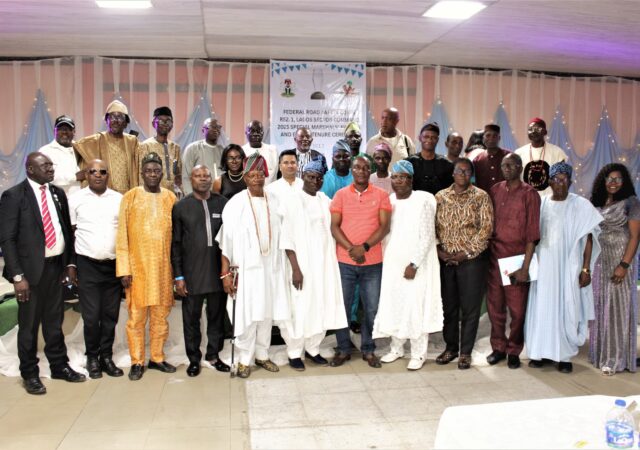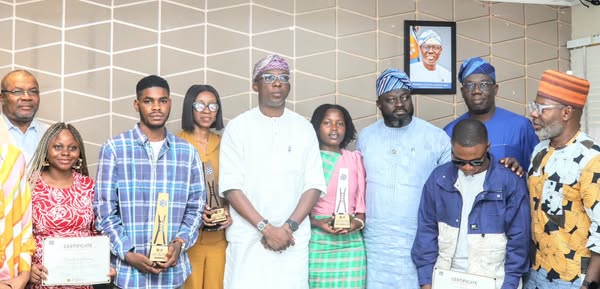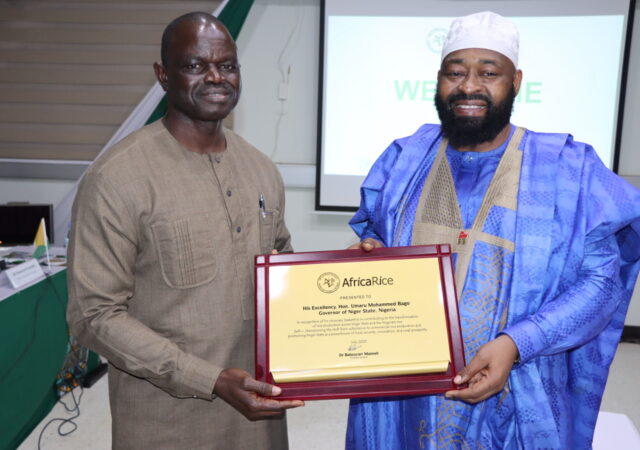By Christopher Burke
Urbanization is accelerating across Africa, but basic sanitation infrastructure remains dangerously underdeveloped. Over 700 million people still lack access to improved sanitation. Traditional pit latrines, poorly managed septic systems and rampant open defecation pollute water sources, degrade environments and expose populations to disease.
The lack of effective sanitation is not just a health issue, but a tangible threat to sustainable urban development, economic growth and environmental stability.
As traditional official development assistance (ODA) stagnates or declines, infrastructure investment continues across Africa led by China’s Belt and Road Initiative, sovereign funds from the Middle East and new entrants such as the US with the Lobito Corridor in Southern Africa. The majority of these initiatives prioritize transportation and energy.
Sanitation infrastructure forms the backbone of a healthy urban environment, but remains chronically underfunded.
Poor sanitation is a root cause of waterborne diseases, including cholera and typhoid that still claim thousands of lives annually across Africa. Sanitation systems rarely generate direct revenue–toilets and treatment plants do not pay for themselves, but their value is realized in human capital, cleaner cities and sustainable growth. According to World Health Organization every US$1 invested in sanitation returns US$5.50 in lower health costs, improved productivity and fewer premature deaths.
Water contamination is a vicious cycle. Wastewater containing human waste and chemicals enters rivers and groundwater, carrying bacteria such as Vibrio cholerae and Salmonella typhi. People rely on shallow wells that draw from polluted aquifers in towns and villages across the continent, exposing families to recurring illnesses and compounding environmental harm.
Soil degradation is another consequence. In Kampala, Uganda, a study by Makerere University found 39 percent of pit latrines had cracks and seven in every ten were either full or overflowing. Further research showed nitrate levels 1.7 times higher, ammonium 10.5 times higher and phosphate 49 times higher downstream from pit latrines—evidence of serious nutrient pollution. These imbalances reduce crop yields and pollute water systems deepening food insecurity.
Lakes and rivers are being choked by harmful algal blooms. Excess nutrients feed rapid algae growth that depletes oxygen and suffocates aquatic ecosystems. Dead zones are expanding in Lake Victoria and other water bodies, impacting millions dependent on fishing. One global study found nearly half of nitrogen pollution caused by human waste originated from just 25 major watersheds including Africa.
Methane emissions from poorly managed sanitation systems also represent a hidden climate threat. Toilets not connected to sewers, including pit latrines, release greenhouse gases. It has been estimated these systems contribute 2–6 percent of all human-made methane emissions.
Methane is 28 times more potent than carbon dioxide at trapping heat in the atmosphere, according to the U.S. Environmental Protection Agency (EPA).
Yet sanitation is often overlooked in climate mitigation plans. We cannot talk about climate resilience or sustainable cities without integrating sanitation systems explains Christopher Cripps, a physical planner and advisor on spatial, economic and climate-smart infrastructure with DT Global, FCDO and the World Bank in Uganda and Ghana. It requires massive mindset change, but we need to explore ways to provide urban sanitation, water, waste, energy, food, greening and wellness as a single, affordable urban eco system submits Cripps.
Coastal and beach pollution is worsening, impacting health, tourism and livelihoods. In Cape Town, South Africa, the Milnerton Lagoon receives 28 million liters of partially treated sewage each day leading to fish die-offs and beach closures. In Accra, Ghana, the Odaw River and Korle Lagoon are contaminated with untreated sewage and domestic waste producing foul odors, degrading ecosystems and depleting fish stocks.
These examples show that when sanitation infrastructure fails, the ripple effects can be severe and far-reaching. Waste from informal settlements flows into rivers and oceans without treatment. In Dar es Salaam, Maputo and Lagos, sanitation systems, where they exist, are outdated, poorly maintained and overwhelmed by rapid urban growth. Infrastructure upgrades have not kept pace.
As the global development landscape shifts, African governments must consider self-financing models. Innovative strategies that leverage rising property values through land value capture, public-private partnerships and community land trusts can help finance sanitation infrastructure. There is growing recognition that aligning sanitation investments with environmental, social governance (ESG) principles can attract impact-oriented capital, drive accountability and embed sustainability into infrastructure planning.
Green finance is a promising avenue. The World Bank reported the value of green, social, sustainability and sustainability-linked (GSSS) bonds issued in the market reached US$5.7 trillion in 2024. Development banks and climate funds are increasingly interested in sanitation as a form of climate-resilient infrastructure.
International investors are watching closely. Sanitation experts such as Prit Salian, a Partner and Principal Consultant at i-san based in Nairobi Kenya, emphasize the sector’s potential to reduce healthcare costs, boost productivity and enhance urban resilience. While sanitation does not yield direct profits, it delivers measurable social and economic returns. Blended finance approaches where public and private investments share risk can make the sector more attractive to institutional investors.
Politically, sanitation is a high-impact, visible improvement that strengthens trust in public institutions. Countries that expand access to sanitation report better school attendance—especially among girls—lower disease burdens and stronger economies. Tourism, agriculture and fisheries all benefit when waste is managed properly.
Sanitation must be seen as a legal and institutional responsibility, not just a service says Edgar Tayebwa, Principal Legal Officer at Uganda’s National Water and Sewerage Corporation (NWSC). Without clear mandates, enforcement and accountability, even the best infrastructure plans risk falling apart.
Africa’s youthful population heightens the urgency. With over 60 percent of the population under 25, demands for jobs, housing and services are rising fast. Sanitation infrastructure presents a critical opportunity to tap into the continent’s demographic dividend and secure gains in health, education and productivity.
Scalable solutions exist. City-wide Inclusive Sanitation (CWIS) integrates sewer systems, on-site sanitation and fecal sludge management. This flexible approach ensures that all residents benefit regardless of location or income. Governments and development partners can invest in solutions tailored to local contexts, not default one-size-fits-all models.
Sanitation solutions that leave women and girls behind are unlikely to be sustainable highlights Margaret Maina, Executive Officer of the Women in Water and Sanitation Association in Kenya. Inclusive planning that ensures women's voices are heard in infrastructure design and service delivery is essential for dignity, safety and long-term success.
Community-led models have proven very effective. In Ethiopia’s Oromia Region, Community-Led Total Sanitation (CLTS) halved open defecation rates at a cost of only US$6–US$11 per person. Zambia’s CLTS programs enabled over 75 percent of participating villages to achieve Open Defecation Free (ODF) status in under two years. The success of programs relies on political will, local ownership, peer monitoring and behavior change–not heavy infrastructure.
Sanitation deserves the same priority as roads, energy and other foundational infrastructure. It may not generate immediate profits, but the indirect returns in reduced disease burdens, increased productivity, better education outcomes and more resilient cities are clear and undeniable.
With traditional aid flows under pressure and new financing models emerging, now is the time for governments and development partners to reframe sanitation as a core driver of inclusive growth. The longer sanitation is neglected, the more costly the consequences will become for people, economies and ecosystems.
—————————————————————————————-








Có ai từng nghe tới **8kbet8** chưa? Trang này giao diện đẹp mê ly, hiệu ứng slot mượt, chơi mà thấy mê quá trời luôn. Nhất là mấy slot thần tài, quay cái là cảm giác may mắn tràn về liền 🧧
pt7rks
Thiss site really has alll thee infolrmation I needeed about this subject and didn’t knokw who tto ask.
f9b711
4xn4sa
Excellent blog! Do you have any tips and hints for aspiring writers? I’m planning to start my own site soon but I’m a little lost on everything. Would you advise starting with a free platform like WordPress or go for a paid option? There are so many choices out there that I’m totally overwhelmed .. Any tips? Many thanks!
I have learned result-oriented things through your website. One other thing I’d really like to say is always that newer personal computer operating systems tend to allow far more memory to use, but they also demand more memory space simply to operate. If people’s computer is not able to handle much more memory plus the newest computer software requires that memory increase, it usually is the time to shop for a new Personal computer. Thanks
Local Solutions Are Key: Why Sanitation Must Be Integrated Across Sectors
In the global development landscape, sanitation often doesn’t get the attention—or the resources—it urgently needs. Yet, access to safe sanitation is foundational to public health, environmental sustainability, and human dignity. So, how do we ensure it gets prioritised? One critical answer lies in rethinking how we approach sanitation interventions—starting from the ground up and integrating them across sectors.
Time and again, community-led and locally driven models have shown that they work. Whether it is through self-financed toilet programs, community-led total sanitation (CLTS), or small-scale water systems, local solutions tend to be more responsive, more sustainable, and often more cost-effective. They take into account cultural norms, local needs, and existing networks.
Yet, in many cases, these models are sidelined in favour of top-down infrastructural investments. While infrastructure is important, it cannot replace the value of deep community engagement. Especially in contexts where financial resources are scarce, starting with local solutions isn’t just smart—it’s necessary.
Another major challenge is that sanitation is often treated as a standalone issue. In reality, no sector exists in isolation. Roads, housing, health, water supply—these are all closely interconnected. Sanitation should be woven into the fabric of these broader development efforts.
For example, as roads are expanded in urban and rural areas, why not integrate sewage systems or public toilet facilities into the design? As new housing developments are planned, why not include decentralised sanitation models that communities can maintain?
The siloed approach simply doesn’t match the complexity of real-world needs. And truthfully, the sanitation sector alone rarely attracts enough funding to meet global demand. But when it’s part of a larger, integrated development plan, it stands a much better chance.
Ultimately, the responsibility falls to planners, policymakers, and development agencies. They hold the tools—and the influence—to design programs that make sanitation a core component of national and local development strategies.
By combining top-down infrastructure with bottom-up innovation and integrating sanitation into broader sectors, we can create solutions that are both scalable and sustainable.
It’s time we stop treating sanitation as a secondary issue and recognise it for what it is: a central pillar of human development.
rs7kwh
This write up offers a timely and compelling analysis of Africa’s sanitation crisis, effectively linking poor sanitation to broader development challenges including public health, climate change, and urban sustainability. One standout strength is the call to reframe sanitation as critical infrastructure, not a secondary service an urgent mindset shift that policymakers must adopt. There is a need to further to discuss how data systems, real-time monitoring, and impact measurement could strengthen sanitation investments. MEL frameworks are critical for accountability, especially when leveraging climate and blended finance.
Christopher Burke’s powerful article highlights the deep crisis of underinvestment in sanitation across urban Africa and the silent yet devastating impact it has on health, climate, and development. As someone who conducted a WASH-focused field study in Nakivale Refugee Settlement under the Makerere School of Public Health, I find his observations not only accurate but urgent.
In our 2023 research with YAREN Organisation, we assessed water, sanitation, and hygiene conditions in private refugee schools in Nakivale. Our findings mirrored the concerns Burke raised: overfilled or cracked pit latrines, inadequate handwashing stations, and widespread contamination of shallow water sources were not theoretical challenges; they were daily realities. Some schools served over 400 learners with a single overburdened latrine, and in several cases, we documented visible contamination risks, from broken taps to drainage trenches that directly exposed children to waterborne diseases.
Burke rightly notes that poor sanitation does not just threaten health; it undermines environmental resilience, food systems, and even education. Our data confirmed this. Schools with inadequate sanitation reported lower attendance, especially among girls, and a higher frequency of preventable illnesses. Moreover, the use of pit latrines near shallow wells correlated with water testing that showed unsafe nitrate and phosphate levels, hoing studies referenced in Burke’s article.
Yet, as his article insists, sanitation remains chronically underfunded, partly because toilets and treatment plants don’t yield visible profits. But what they do yield, as we saw in Nakivale, is dignity, safety, better learning outcomes, and long-term community stability. Burke’s call to frame sanitation as climate-resilient infrastructure must be taken seriously. Our work shows that rainwater harvesting, community-led behavior change, and low-cost sanitation improvements can be both scalable and transformative.
I deeply resonate with the insight from Christopher Cripps that we must treat sanitation not as an isolated sector, but as part of a broader urban ecological system, alongside water, food, waste, and energy. This systems-thinking approach is vital, especially in vulnerable communities like refugee settlements, where multiple risks overlap.
Finally, I echo the call for blended finance models, community ownership, and inclusive planning, especially involving women and youth. These were key elements in our work at YAREN. We observed that the most sustainable WASH practices were those where local schools, parents, and youth groups were engaged as co-creators, not just beneficiaries.
Sanitation is not a side issue; it is a foundation for sustainable development, peace, and resilience. Our experience in Nakivale confirms what this article so clearly argues: if we delay action, the costs to health, dignity, ecosystems, and economic growth will only escalate.
A powerful share, I just given this onto a colleague who was doing a bit analysis on this. And he in reality purchased me breakfast because I discovered it for him.. smile. So let me reword that: Thnx for the deal with! But yeah Thnkx for spending the time to discuss this, I feel strongly about it and love reading extra on this topic. If attainable, as you grow to be experience, would you thoughts updating your weblog with extra details? It’s extremely helpful for me. Massive thumb up for this blog put up!